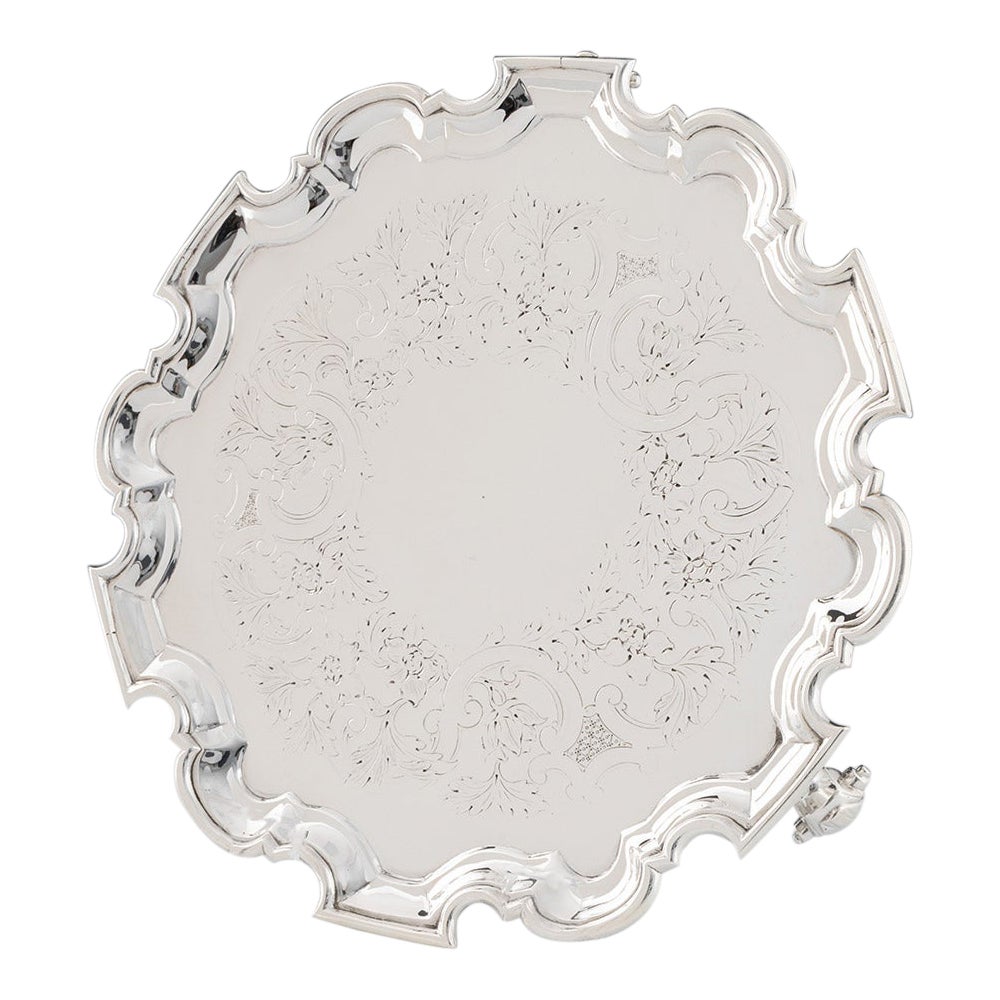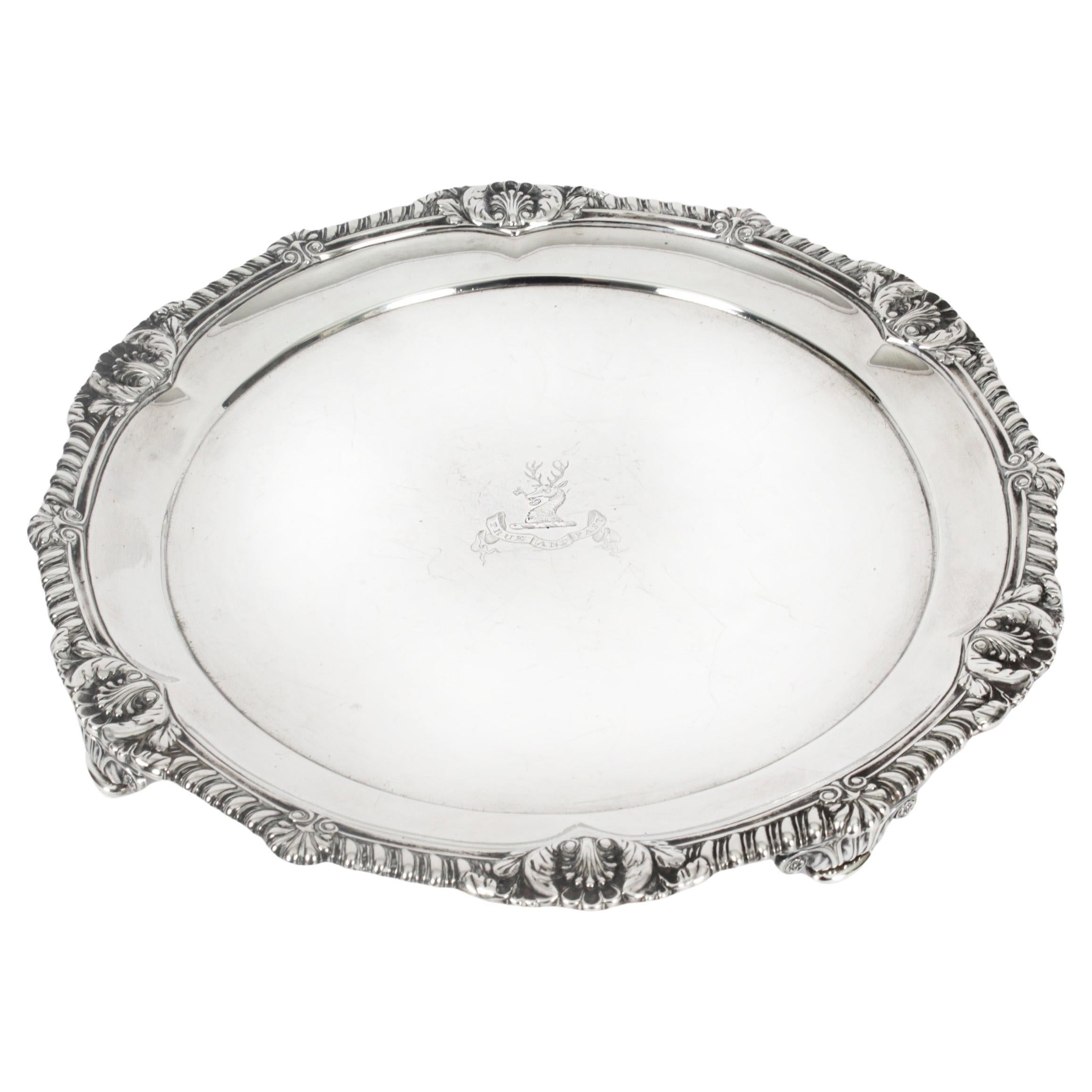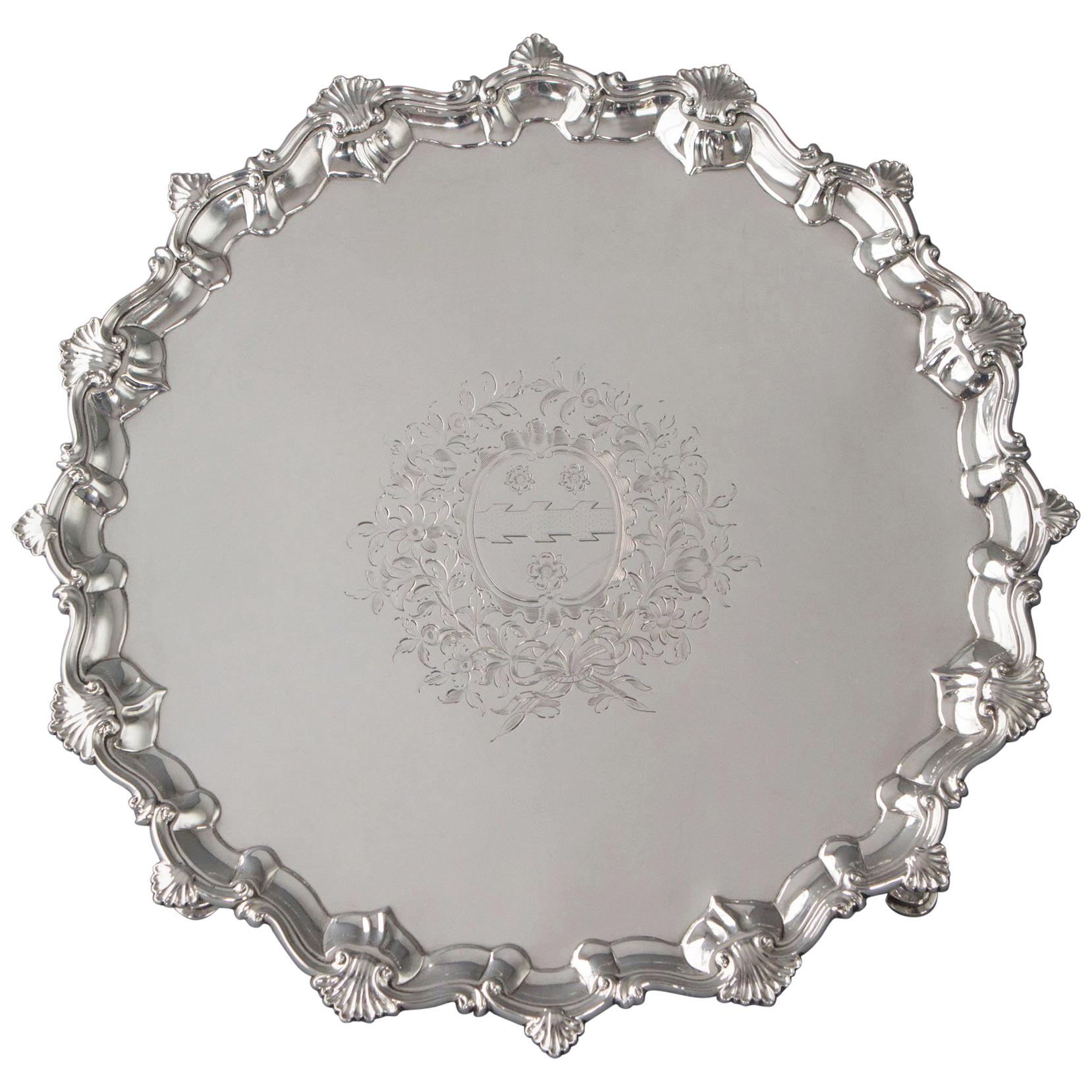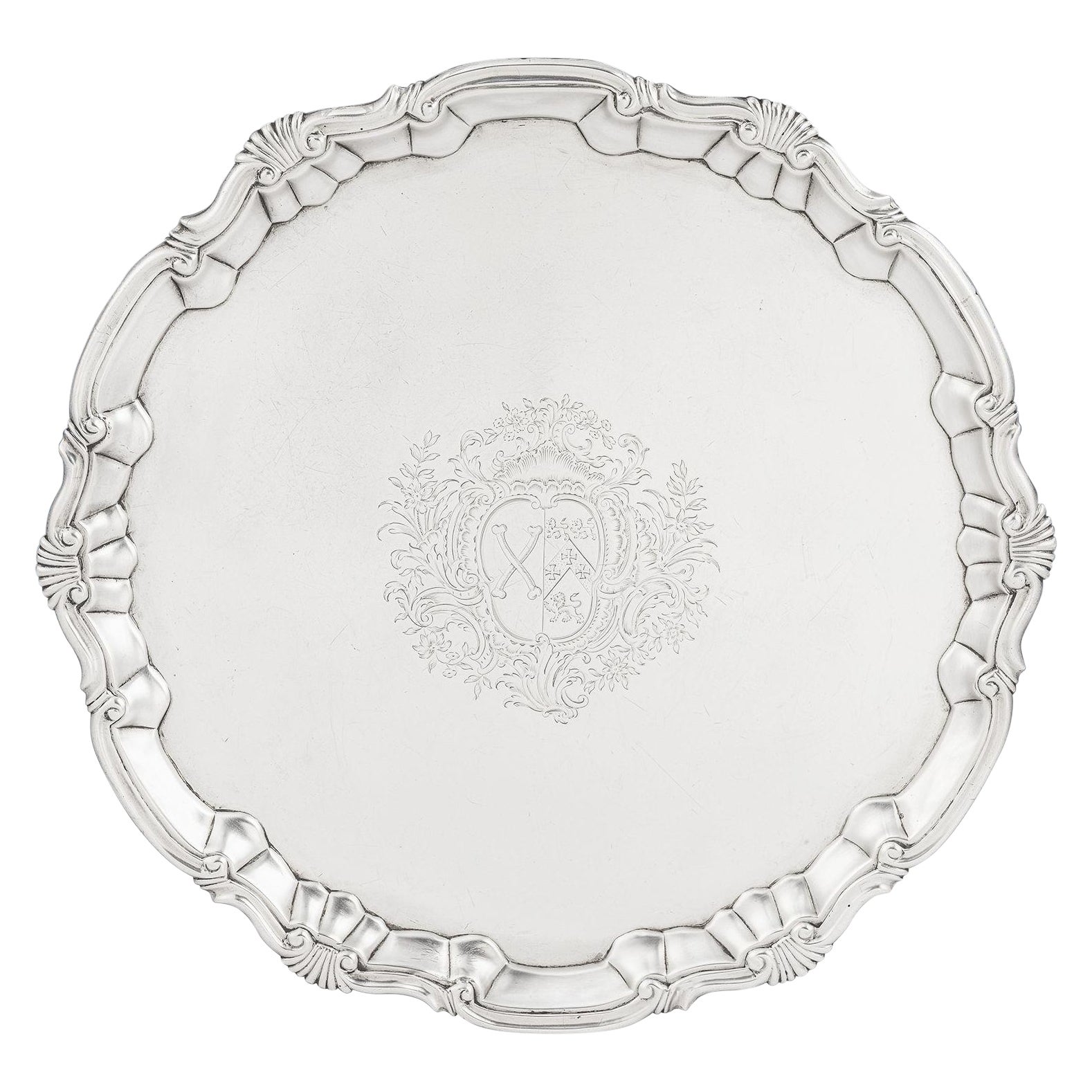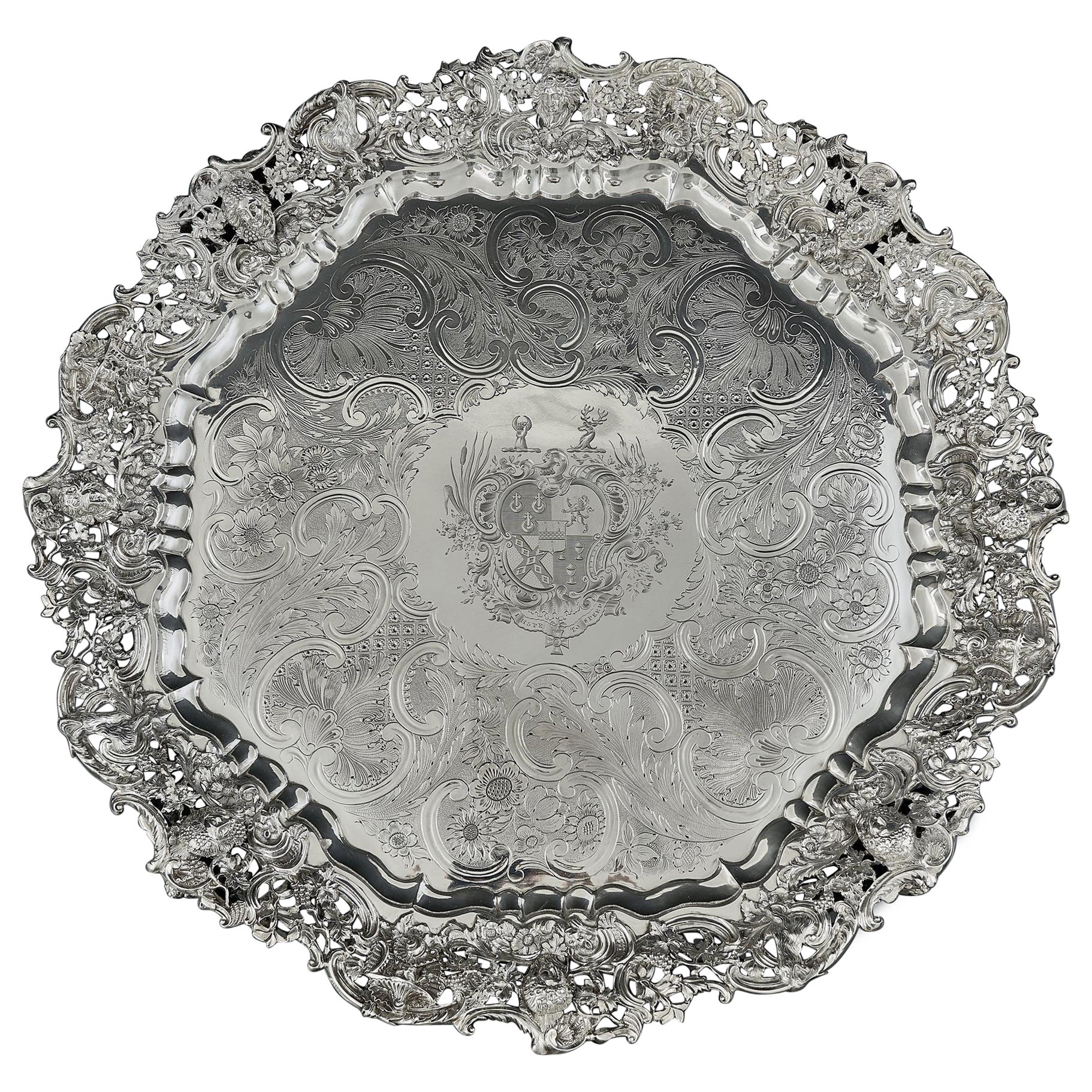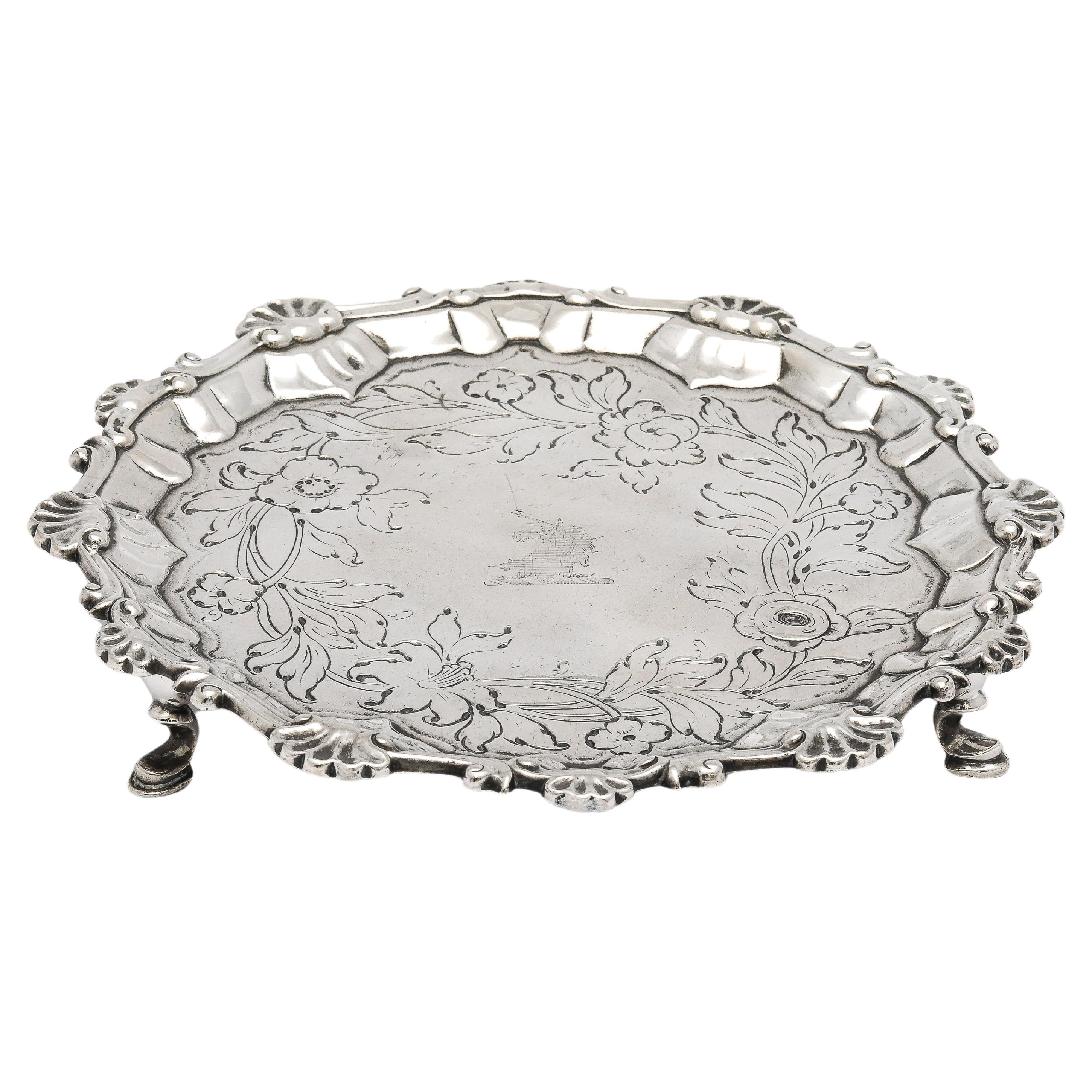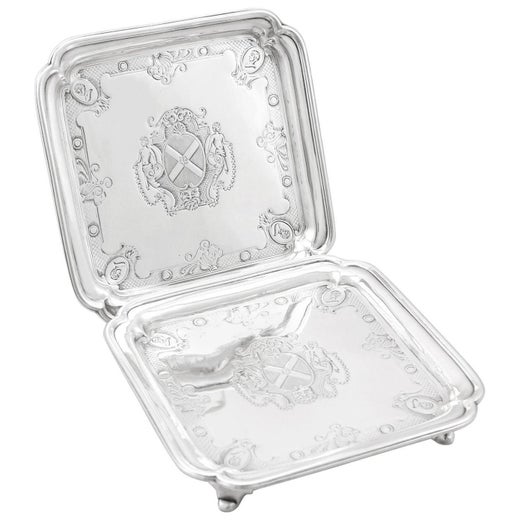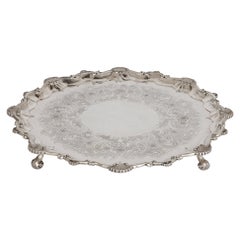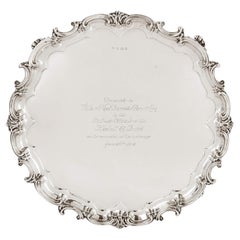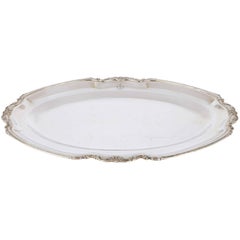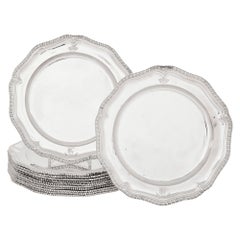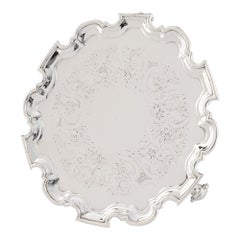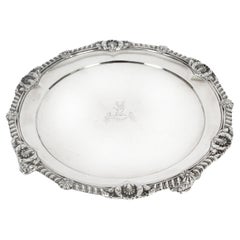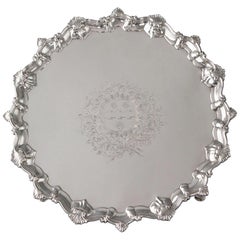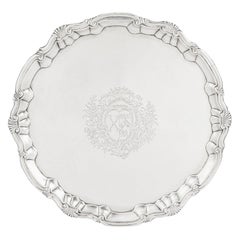18th Century Silver Salver by Paul de Lamerie
About the Item
- Creator:Paul de Lamerie (Maker)
- Dimensions:Height: 1.19 in (3 cm)Width: 10.63 in (27 cm)Depth: 10.63 in (27 cm)
- Style:Rococo (Of the Period)
- Materials and Techniques:
- Place of Origin:
- Period:
- Date of Manufacture:1744
- Condition:Wear consistent with age and use.
- Seller Location:London, GB
- Reference Number:Seller: 169071stDibs: LU956334769222
Paul de Lamerie
Paul de Lamerie was a London-based silversmith. De Lamerie was born in 's-Hertogenbosch in the United Provinces, now the Netherlands. He was the son of a minor French nobleman, Paul Souchay de la Merie, a Huguenot who left France following the Edict of Fontainebleau in 1685. His father became an officer in the army of William III of Orange and moved to London in 1689 during the Glorious Revolution, but died a pauper in 1735. He married Louisa Juliott on 11 February 1717. They had two sons and four daughters together, three daughters survived.
- ShippingRetrieving quote...Shipping from: London, United Kingdom
- Return Policy
More From This Seller
View AllAntique Late 19th Century English Victorian Tableware
Silver
Early 20th Century English Edwardian Sterling Silver
Silver
Early 20th Century Czech Platters and Serveware
Silver
Antique 1780s English George III Dinner Plates
Silver
Antique Late 19th Century German Rococo Serving Pieces
Silver
Antique Late 19th Century English Classical Greek Figurative Sculptures
Silver Plate
You May Also Like
Antique 1740s British George II Sterling Silver
Silver
Antique 1810s English George III Sterling Silver
Sterling Silver
Antique 1750s English George II Platters and Serveware
Sterling Silver
Antique 18th Century English George II Decorative Dishes and Vide-Poche
Silver, Sterling Silver
Antique 19th Century British George IV Platters and Serveware
Sterling Silver
Antique 1760s English George III Platters and Serveware
Sterling Silver
Read More
Exquisite Sèvres Porcelain Brings More to the Table than Dishes
The elegant ceramics represent the best of French artistry and innovation.
What Is Ormolu, and Why Are We Talking about It?
This golden material glamorized neoclassical furnishings and transformed upper-crust sitting rooms from France to Philadelphia in the 18th and early 19th centuries.
